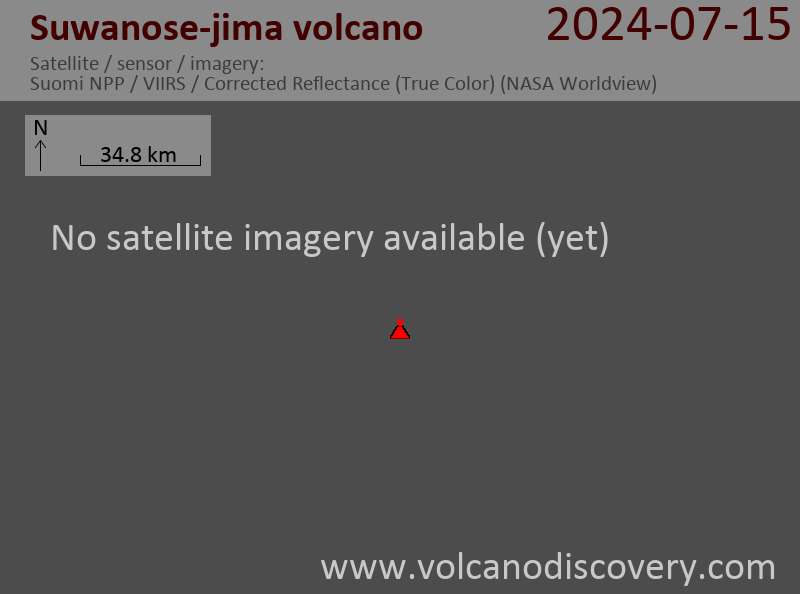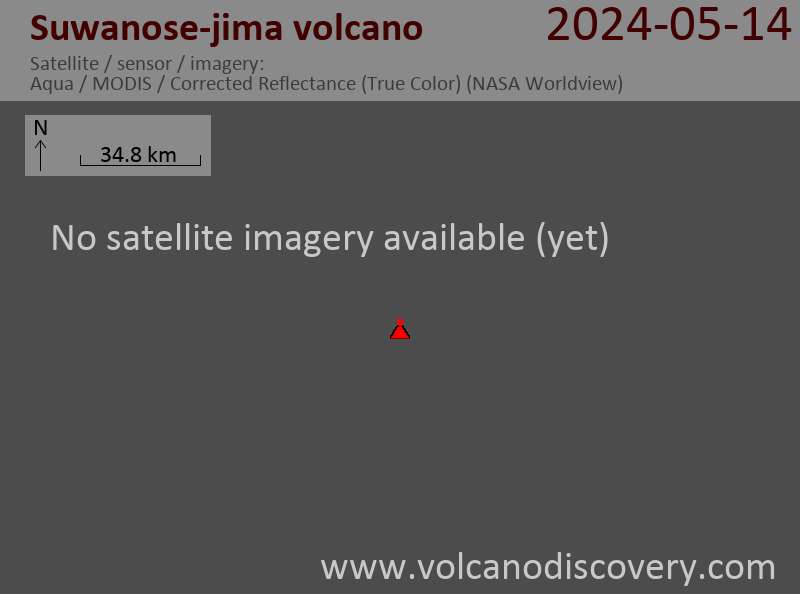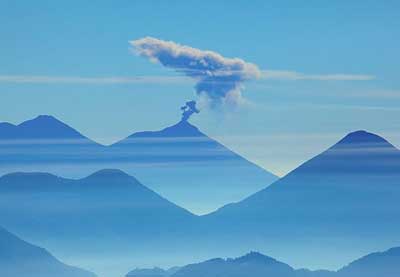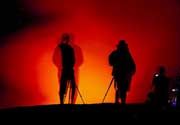Suwanose-jima Volcano
Updated: Apr 24, 2024 19:50 GMT -
stratovolcano 799 m/ 2,621 ft
Ryukyu Islands (Japan), 29.64°N / 129.72°E
Current status: erupting (4 out of 5)
Ryukyu Islands (Japan), 29.64°N / 129.72°E
Current status: erupting (4 out of 5)
Last update: 3 Apr 2024 (Smithsonian / USGS Weekly Volcanic Activity Report)
Suwanose-jima (諏訪之瀬島) volcano is Japan's and one of the world's most active volcanoes. It has been in a state of near-continuous strombolian-type eruption since 1949.
The volcano forms the 8 km long spindle-shaped island of the same name in northern Ryuku Islands, Japan. The remote island is home to about 50 residents only.
Suwanose-jima consists of an andesitic stratovolcano with 2 historically active summit craters. Intermittent to continuous strombolian activity began from On-take (Otake), the NE summit crater, in 1949 and has been going on since. After 1996, occasional periods of inactivity have become more frequent.
[smaller] [larger]
Suwanose-jima volcano eruptions: 2004 (Oct) - ongoing: intermittent strombolian-type activity
Since 1949: essentially continuous activity
2000 (Dec) - Jul 2004 (Jul): strombolian activity, 1999 (Jan-Feb, June), 1996 (Dec) - 1997 (Apr), 1949-96, 1940, 1938, 1934 (?), 1925, 1921-22, 1915 (?), 1914 (?), 1889, 1885, 1884, 1877, 1813-14 (sub-plinian Bunka eruption), around 1600 AD (large explosive eruption)
Latest nearby earthquakes
Background
The summit of Suwanose-jima volcano is truncated by a large breached crater extending to the sea on the east flank that was formed by edifice collapse.The largest historical eruption took place in 1813-14, when thick scoria deposits blanketed residential areas, and the SW crater produced 2 lava flows that reached the western coast. At the end of the eruption the summit of On-take collapsed forming a large debris avalanche and creating the horseshoe-shaped Sakuchi caldera, which extends to the eastern coast. The island remained uninhabited for about 70 years after the 1813-1814 eruption. Lava flows reached the eastern coast of the island in 1884.
(Source: Smithsonian / GVP information)
Eruptions of Suwanose-jima volcano
1979-80 activity
A typical 2 year log of activity from Smithsonian's Monthy reports is presented here, illustrating the pulsating, but essentially persistant strombolian activity observed at Suwanose-jima volcano ...more info
A typical 2 year log of activity from Smithsonian's Monthy reports is presented here, illustrating the pulsating, but essentially persistant strombolian activity observed at Suwanose-jima volcano ...more info















